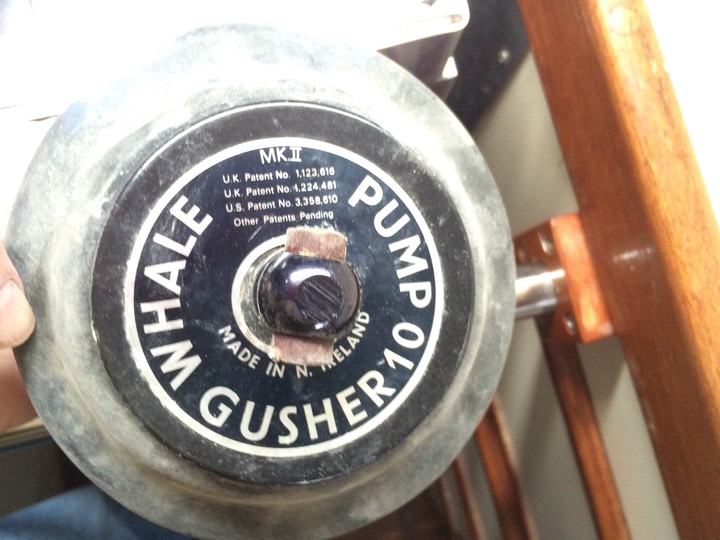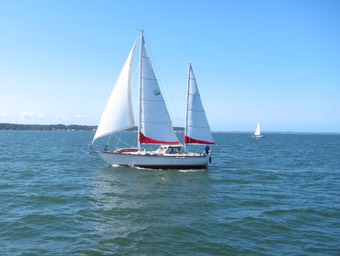A few years ago, one of the bigger boat jobs was adding a second electric bilge pump. See A Manifold of Bilge Pumps. At the time, it felt epic because it was a job that was safety-critical. As in “your life depends on doing this right.” Or maybe “Do this wrong and die.”
We’ve read enough to know what happens when a boat has an unstoppable hull-breach. Water over the floorboards. Batteries flooded. No radio. No lights.
We had tackled a few safety critical jobs before this. The sink drain hose, for example. Rebuilding the seacocks. But those are big, static, heavy-duty pieces of hose and bronze. The seacock could be closed to keep water out, and that was that. Simple. Done.
Not so with an electric pump.
The Worrying Budget
The bilge pump involved much more worry than the seacocks. In some ways, it also involved less worry.
More worry came from many sources, starting with its electical side — is it hooked up right? I decided to wire it permanently to the house batteries, with only a small fuse. (Eventually this became two fuses, a main 200A fuse to protect the big wires, and the little 10A fuse to protect the pump.)
The pump is plumbing. Can it lift water all the way from the deep bilge to the exhaust port?

Plus, there’s the “manifold” question: is it really sensible to have so many hoses terminating near each other? What about water flowing in a circle and running back down to the bilge? (Eventually, I replaced the manifold with separate through-hulls.)
Plus, there’s the working upside down over the deep bilge to install the damn thing. Every tool and part dropped was over 4′ away and sitting in grungy bilgewater. That slows progress down.

Balancing these worries was the fact that it’s just a backup. We have two other bilge pumps.
Or so we thought.
(We’ve since raised the number of pumps to a total of four, but that’s another story.)
The Whale Gusher 10 Mk II manual pump is elegant, over-engineered simplicity. A giant rubber diapragm and two one-way flapper valves. All fit into a giant aluminum block with huge stainless screws.
It might have worked. Or it might not have. It’s hard to test, since we had a relatively dry bilge. I suppose we could have used a hose to fill the bilge with dock water and test it. But. It’s so simple, what could go wrong?
With two electric pumps, it doesn’t matter, does it?
Are those famous last words?
Rainwater
Last weekend, we visited Red Ranger to exchange tools, look at the sail covers, and generally assure ourselves that everything was fine.
I noticed that our surveyor had carefully turned off every single circuit breaker. That includes the breaker for the lower of the two electric bilge pumps. I reset the panel and the pump #1 kicked on.
No big deal. Right? A little rain. A little condensation. Of course there’s water in the bilge.
But it ran. And ran. And ran. And continued running. I could hear the water coming out. It wasn’t a damaged float switch.
So I pulled up some floor to look in the deep bilge. The water was up to the second — higher — float switch. This is the switch for the “#2” pump I put in back in 2010. The pump that’s wired to be always on. The pump that must have been working to keep the rainwater out! The lower pump was switched off, so this was the only working pump.
And my worry-filled installation had — it turns out — been worth it. The #2 pump had properly acted as the failover. Just like it was designed to. Back in 2010 before we knew much about Red Ranger.
Test Time
And Hey! The bilge is full of water! This is a chance to test the manual pump!
I grabbed the lever and pumped. And pumped. And pumped. And pumped.
The manual pump was doing nothing. Zero. Zilch.
I took the hose off and had CA pump air to see if it was generating any suck at all.
The answer? No Suck. None.
At least the electric pumps still work.
The #1 pump (which had been switched off) has the lowest float switch. It would have worked. It also has a digital counter so we know how many times it has run. The #2 pump has a low intake, but a higher float switch. It’s strictly fall-back. And it worked!
The super-simple manual pump?
The rubber bits appear to be shot.
Rebuild kit is on order.
The Rainwater
The water? We get some water in through the hawsepipe. Also, we get water down the mast. But normally, that’s hardly noticeable.
CA thinks that leaving the head portlights open for ventilation was the mistake. That’s what let many gallons of rainwater into the bilge. We’ve closed the ports.



